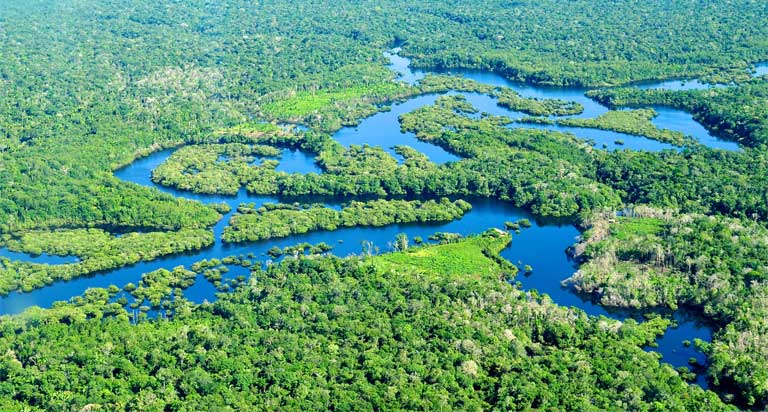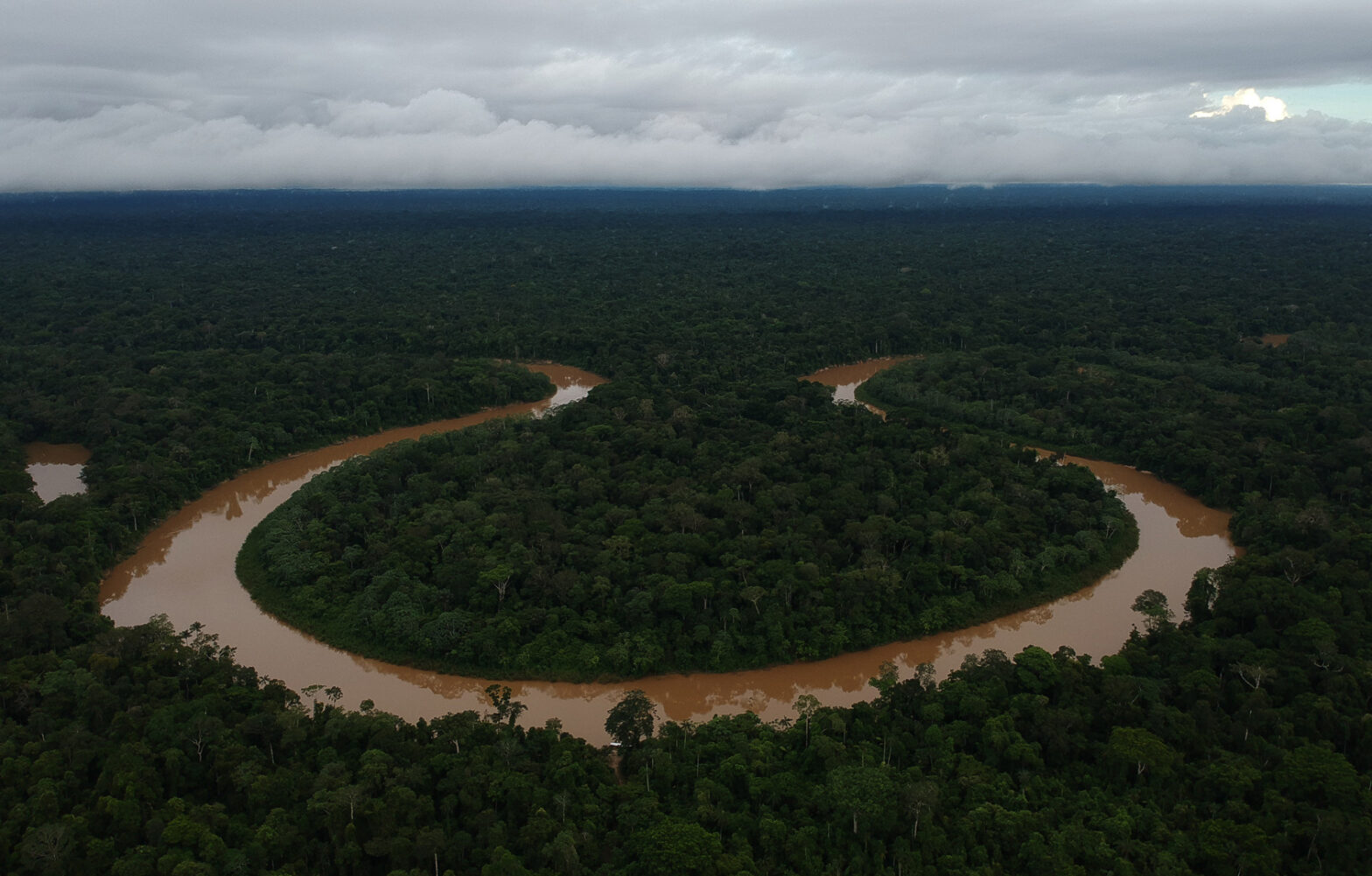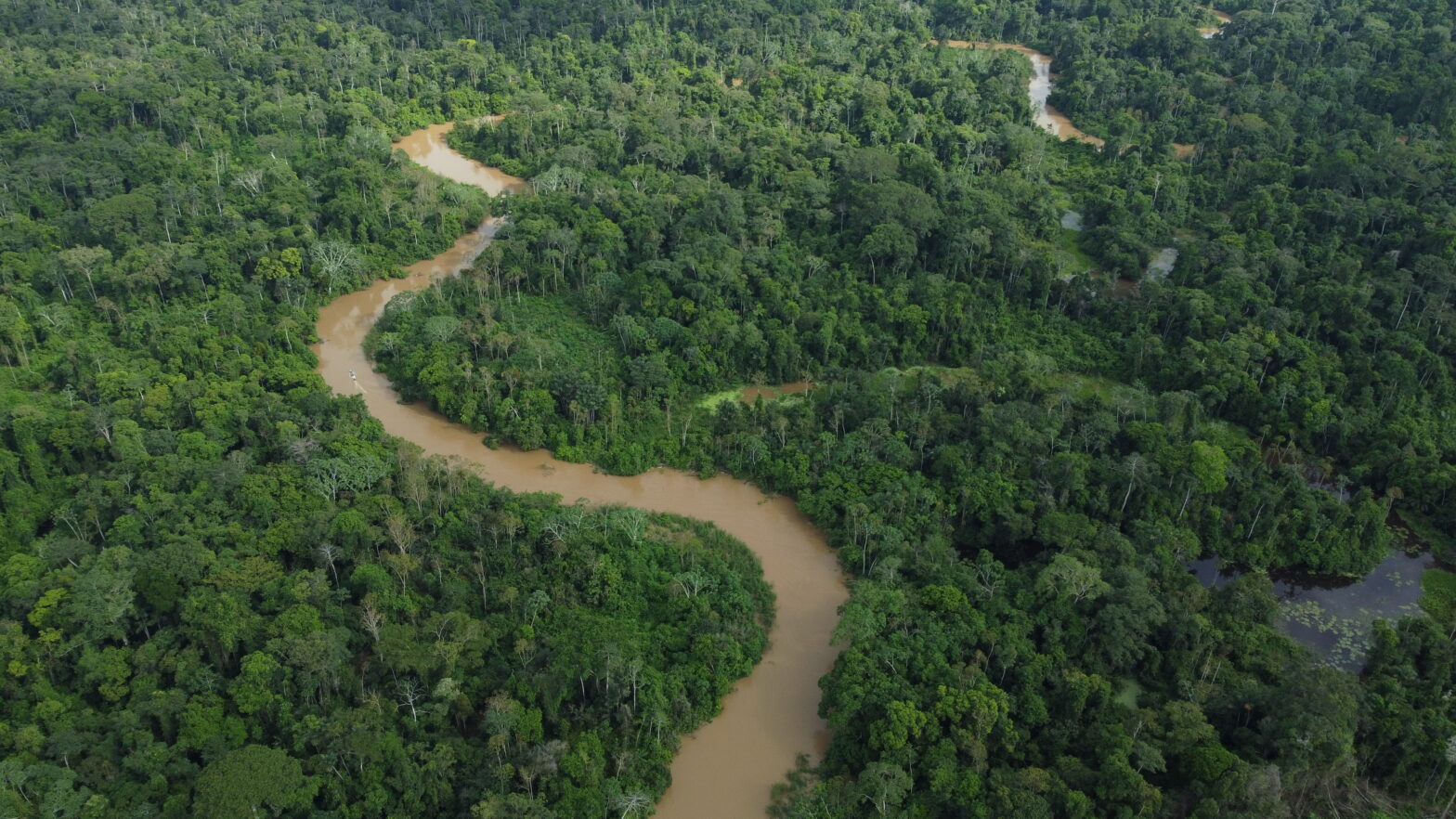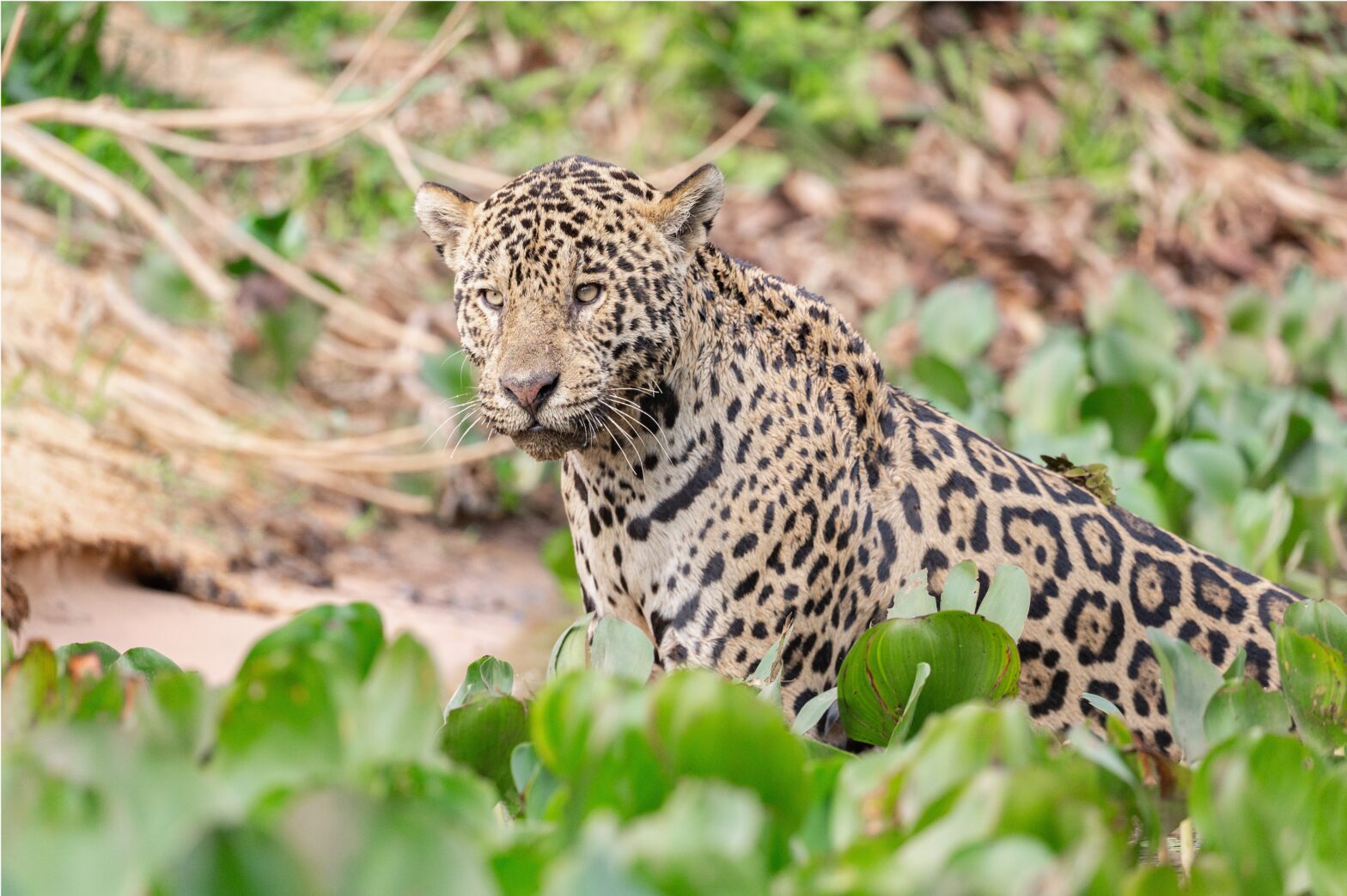Unless a system-wide approach to conservation is applied to Amazon basin lakes, floodplains and rivers, we could soon see a collapse of the region’s fish populations.
Imagine a fish isolated in an Amazonian lake — part of the vast freshwater ecosystem of the Amazon basin, an ever-changing network of rivers, lakes and floodplains that extends to 1 million square kilometers (386,102 square miles).
Now imagine that isolated fish as water levels rise during the wet season, and floodplains vanish beneath up to 15 meters (49 feet) of water. The fish — once restricted by the lake’s edge — swims freely into the flooded forest and mingles with others of its kind from elsewhere.
For thousands of years, isolated fish populations across the Amazon have likewise played a game of musical chairs: intermixing between flooding water bodies, migrating short and vast distances between lakes and along river channels, and then as the waters receded, forming new lake and river populations.
This connectivity — with the genetic mixing it affords — is vital for healthy fish populations, but is extremely vulnerable to changes in the annual “flood pulse” that inundates forests.
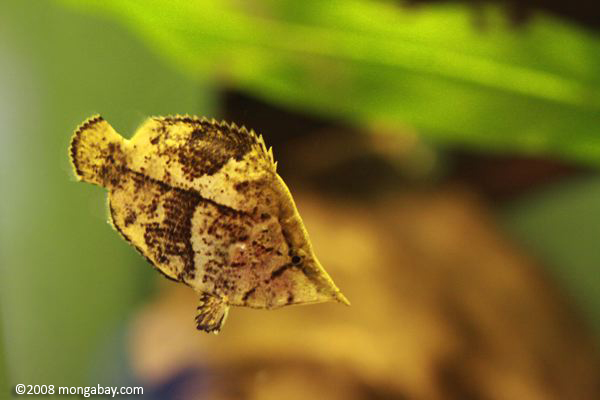
A new study warns that conservation efforts need to be urgently stepped up if fish biodiversity in the Amazon — the highest anywhere in the world, with more than 2,000 species — is to be safeguarded in the face of the region’s many dams (both operational and planned), along with escalating drought brought by climate change.
Fish respond differently to stressors
The study, led by Lawrence Hurd, a professor at Washington and Lee University, focused on how the population structure of different species influences their responses to changing conditions — including the breaks in connectivity brought by new dams and climate change. Fish conservation can be more effective, the researchers argue, if it takes individual species responses to such stressors into careful consideration.
The researchers looked closely at metapopulations: dynamic, interconnected sub-groups, or subpopulations, within an individual species. These sub-groups have a patchy distribution — with each subpopulation separated from all other subpopulations for much of their time — living within Amazon floodplain lakes and various headwater tributaries, for example. Metapopulation isolation is not permanent, however: individuals can move from one population to another when Amazon floodwaters rise or via migration. This dispersal and intermingling of the sub-groups can help maintain genetic diversity and keep local populations plentiful, which is the key to the health of a species overall.
The team reviewed the ecology and life history of different Amazon fish species, and concluded that while some species exist as metapopulations, others do not. But some are heading toward becoming metapopulations due to human impacts, with important implications regarding decisions concerning the best conservation strategies to protect them.
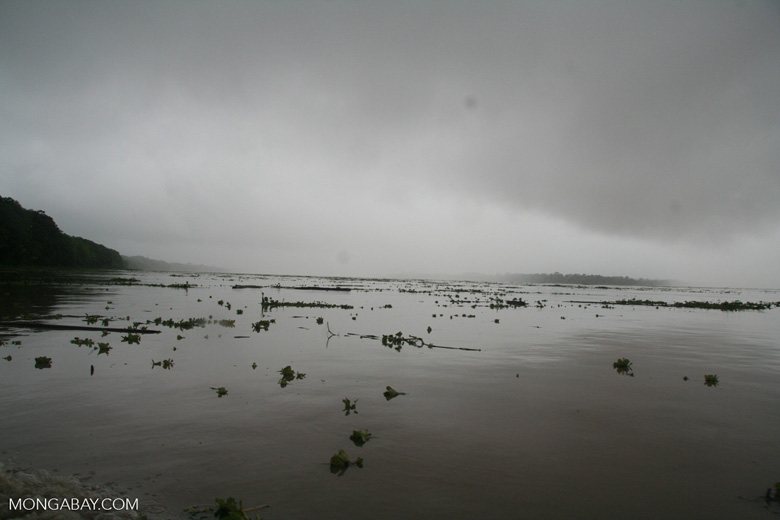
“If a species is already structured as a metapopulation, then it has evolved to accommodate that lifestyle according to the way the habitat is constructed,” Hurd told Mongabay. “If you interrupt metapopulation dynamics [with a dam, climate change or by other causes], it may cause extirpation of that species.”
“If a species does not function as a metapopulation, it is not likely to fare well being forced by an altered habitat to act as a metapopulation,” he continued. “It is a question of how natural selection over time has shaped the way the population maintains itself, versus a response to a change that happens faster than a species can adapt.”
Maintaining the existing “aquatic regime” is therefore a key conservation strategy, Hurd said, because at the moment “we don’t know if these species are flexible enough to adjust to the change.… We need to understand the biology and hydrology of this system much better than we do if we are to preserve aquatic biodiversity and commercially important fish species.”
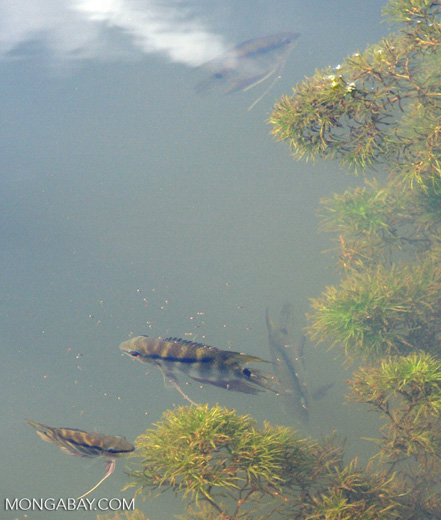
The case of the Amazon catfish
It’s easy to make false assumptions about metapopulations, their movements, their ability to interbreed, and their capacity to adapt to reductions in connectivity.
For some Amazon species, river and floodplain migrations mean that fish from different areas regularly come into contact, resulting in one large, inter-breeding population. But for others, such as one species of Amazon catfish (Brachyplatystoma rousseauxii) that isn’t the case. It undertakes the longest migration of any freshwater fish known, so one would imagine that individuals from one subgroup would interbreed with other subgroups along the way. Not so.
“These fish breed in the Andean and pre-Andean headwaters, and larvae drift downriver through five countries (approximately 5,500 kilometers (3,417 miles) to the estuary of the Amazon,” the researchers state in their study.
But the fidelity of individual catfish to their original breeding sites means that very little sub-group mixing occurs, despite the great distances that the fish travel alongside others from different headwaters. Returning ‘home’ for them “means that each tributary may produce a distinct genetic local population, the sum of which could constitute a migratory metapopulation of enormous geographic range,” the team writes.
The danger of dams and climate change
Dams are an obvious barrier to aquatic migration, and the burgeoning hydroelectric industry across the Amazon is disrupting animal movements along numerous rivers, as well as affecting flood dynamics.
“The greatest threats to the aquatic system, in my opinion, are dam construction in the short term and global warming in the long run,” Hurd told Mongabay. “However, other factors such as deforestation, overfishing, pollution, and the introduction of alien invasive species also contribute to the deterioration of the aquatic portion of this ecosystem.”
“The plain truth is that dam construction has to be halted or we are going to lose a substantial number of fish species,” Hurd said.
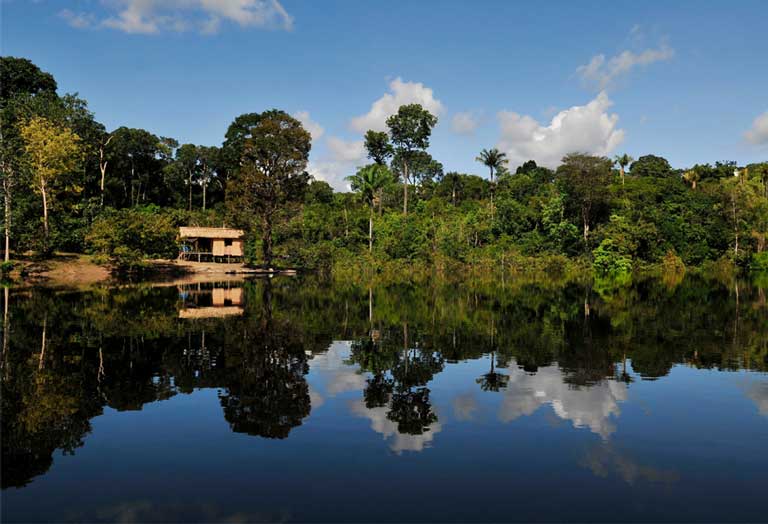
Climate change impacts are already being felt in the region. “We have seen historically severe droughts there in recent years that are strongly related to global warming and thus appear to be a long-range problem,” Hurd said. “If the predictability of [the annual Amazon] ‘flood pulse’ is reduced by, say, extended drought, it could isolate the lakes long enough to cause an interruption in the life cycle of many fish species, and create intense competition and predation pressures as the lakes shrink by evaporation.”
Importance of protecting interconnected freshwater systems
Ensuring that connectivity is maintained is crucial to conservation success. But recognising the value of protecting multiple lakes, floodplains and river systems is also vital, Hurd explained. “If we consider that a population exists in more than one habitat over time because of seasonal migration patterns, or that cross-colonization of lakes can allow low density populations with poor reproductive potential to benefit from an influx of migrants from healthier populations — along with genetic mixing that may improve fitness — then it is clear that realistic preserves must contain more than a single lake or type of lake.”
“Biodiversity of the floodplain region resides as much in the differences in species composition among lakes as in the number of species within any single lake. Thus, the more lakes you set aside to protect from excessive exploitation, the greater the biodiversity you can protect.”
While scientists are beginning to understand that the conservation of interconnected lake, river and floodplain ecosystems is vital to preserving Amazon fish populations, establishing those protected aquatic systems has, so far, been easier said than done. “There are very few protected areas [in the Amazon], and even those that have been established are seldom patrolled or enforced,” Hurd reported.
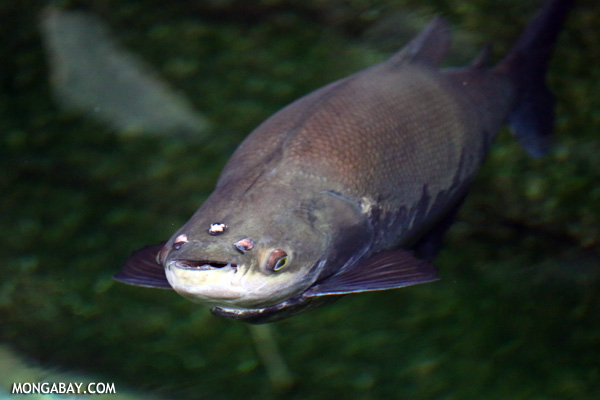
His team suggests that one potentially fruitful approach to freshwater conservation is community-based management, with on-going monitoring to determine sustainable levels of fish exploitation. The researchers cite some successes in adopting this strategy, but also recognise that there are limitations and hurdles to be overcome, including facilitation by the Brazilian government.
“Unless local riverine communities become convinced that regulation can ensure sustainable catches for them in the future, and work to enforce limits, establishment of preserve areas may be futile,” Hurd told Mongabay.
One way to leverage better community participation, and to enhance local protection and enforcement, is to emphasize the commercial and nutritional value of Amazon fish species with local communities and the government, according to the study.
Decision makers and river people also need to be educated about the other ecological services performed by fish. For example, some fish play a less known but important role in the Amazon ecosystem as seed dispersers — shaping and maintaining forest biodiversity. The larger the fish, the larger the seed it can disperse, meaning that overexploitation of fish stocks for human consumption — which always favors catching the largest fish — can have knock-on effects on the forest itself. Ironically, well-meant fisheries laws, which legally protect smaller fish over bigger ones, can be detrimental to seed dispersal and forests.
The failure to protect aquatic systems at the federal level remains a serious problem. “One of the biggest hurdles [to conservation] is the Brazilian government which has not, to put it mildly, been a friend of biodiversity or of environmental conservation,” Hurd concluded.
Leandro Castello, of Virginia Polytechnic Institute and State University, agrees that a broader perspective is necessary for conserving the connectivity of the Amazon’s freshwater ecosystem. “[C]onservation of biological resources in the Amazon will not be successful until we stop addressing conservation issues at small geographical scales and start considering how the Amazon forest-river system is hydrologically connected as a single entity,” Castello told Mongabay.
“We unfortunately have a tendency to think of one protected area here, and another there, as solutions to these problems. The time has come to scale up this thinking to encompass the whole basin. We can continue to think and act as we have been doing, but we do [so] at the risk of the demise of the Amazon,” he warned.
Citation:
L.E. Hurd, Sousa, R.G.C., Siqueira-Souza, F.K., Cooper, G.J., Kahn, J.R., Freitas, C.E.C. (2016) Amazon floodplain fish communities: Habitat connectivity and conservation in a rapidly deteriorating environment. Biological Conservation 195: 118-127.

– This report was originally published in Mongabay and is republished by an agreement to share content.


